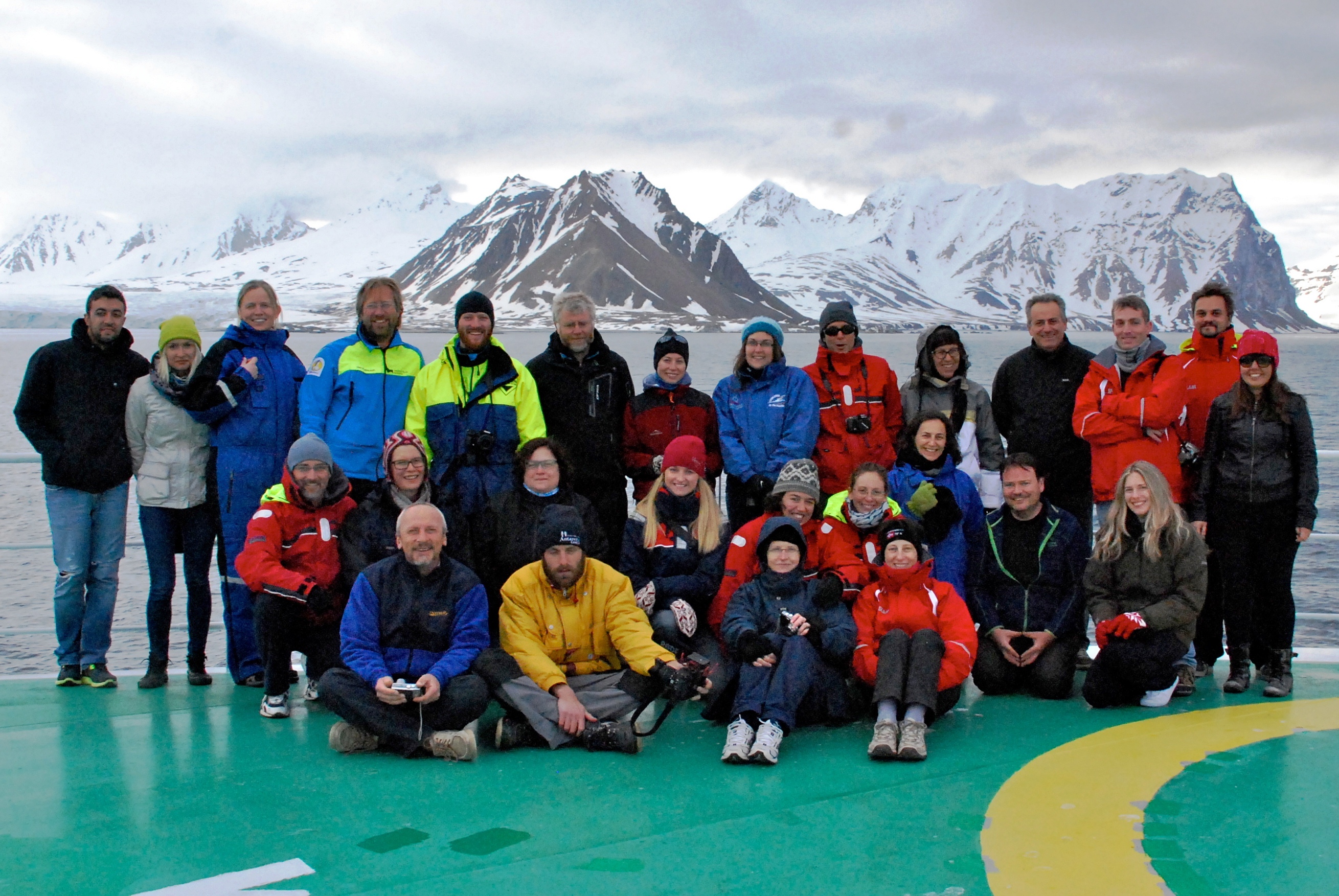Microplastic pollution in the Arctic
|
Project Acronym &Title: PolarPlastics – Microplastic pollution in the Arctic |
   |
|
Amy Lusher, Galway-Mayo Institute of Technology, Ireland |
 |
Main Objectives
The main aim of the project was to collect and make an assessment of the abundance and distribution of microplastics in polar waters. We had 5 main objectives:
1. Identify the distribution and abundance of microplastics in polar waters during transit between Tromsø and Svalbard.
2. Compare polar fronts and currents to see if they have an effect on the distribution of microplastics.
3. Identify the presence or absence of microplastics in benthic sediment.
4. Identify changes in distribution and abundance of microplastics at different depths in the water column.
5. Compare the ratio of zooplankton to microplastics collected in surface waters.
A little background on microplastics.
What are they: Microplastics are small pieces of plastic less than <5mm, they come from the breakdown of larger plastic items or from direct input as small plastic pellets, scrubbers in cosmetics, plastic powders which are used for air blasting ships hulls. Microplastic fibres can also come from the breakdown of ropes in the marine environment, or from washing synthetic clothing and fibres are not removed at sewage treatment works.
Why are they an issue in the ocean: Monitoring the accumulation and fate of microplastics in the marine environment are of particularconcern as they are almost, if not impossible, to remove. Once in the marine environment they can be transported through the water column, from surface waters, to the deep sea sediments, wash up on beaches and accumulate on strandlines worldwide. Distribution in the ocean is often governed by prevailing winds and ocean currents, which could see transport of microplastics to isolate areas, far from plastic production. Microplastics could be mistaken by organisms as prey, and ingested. Laboratory studies have started to look at the effects of ingestion. Before we can identify which organisms are affected in polar waters, we must first identify their distribution.
Work progress and main achievements
|
There were three main elements to our research, the primary task was to adapt a sampling technique that we had already developed for the Irish national research vessel, R.V. Celtic Explorer. It involved finding the intake of seawater on the vessel, running a hose around the desk and filtering 1000 litres of water every hour. We collected our samples using a sieve set up on the back deck. Each sample was re-suspended and transferred to the lab, where we then filtered it down and froze the sample for analysis in a contamination free environment in the laboratory. We collected 80 samples, and initial analysis has revealed microplastic particles throughout the survey area. Our second task was to utilize a method of microplastic sample collection known as a manta net. It is designed to sample the very surface of the sea water using a 333 micron mesh. It needs to be used in very flat calm conditions, which we were fortunately graced with throughout the survey. The manta net collected anything floating in the surface water, including zooplankton, algae and plastics. Each sample (n=21) was preserved for analysis later in the year. We will be carrying out a comparison of zooplankton and the amount of microplastics we found. Our third task was to collect sediment samples from suitable locations in the survey area. We collected 5 samples and they will be processed by floating the sediment in NaCl. This method causes items with a density less than the solution to float (including plastics) and biological or items with a greater density items to sink. Additionally, we will look at the influence of oceanographic features on the distribution of microplastics. The oceanic waters west of Spitsbergen marks a boundary between two different water masses and the bathymetry affects mixing and the sinking of less dense water masses. To see whether there is an oceanographic influence on microplastic abundance, the information obtained regarding the current profiles will be compared to microplastic abundance in the Arctic. CTD measurements and underway measurements will be analysed with the underway microplastic samples to look for any relationship between the water composition and microplastic abundance in the Arctic. The underway dataset is particularly relevant as both datasets were collected at 6m depth through the same intake. Overall the information we gather from our analysis will allow us to make inferences into the levels of microplastic pollution in the arctic environment. If microplastics are found throughout the arctic environment, there is a possibility that polar biota can be affected by their presence. This will act as a baseline study and highlight priority area for microplastic research in the Arctic. |
   |
For more information:
Amy and Heidi’s work on microplastics: http://plastictides.wordpress.com/
Amy’s Publication on microplastics in the North Atlantic: Lusher et al. (2014). Microplastic pollution in the Northeast Atlantic Ocean: Validated and opportunistic sampling. Marine Pollution Bulletin. Available online: DOI: 10.1016/j.marpolbul.2014.08.023
